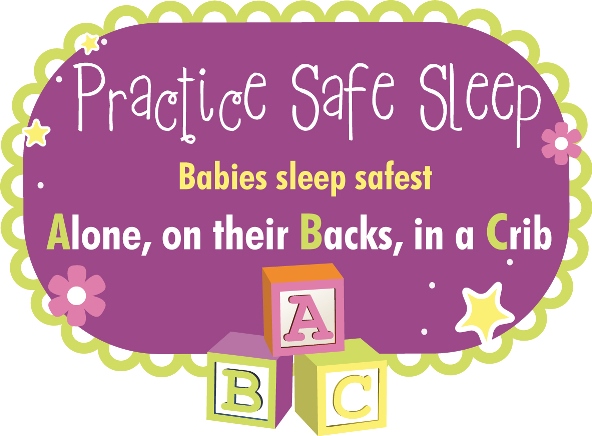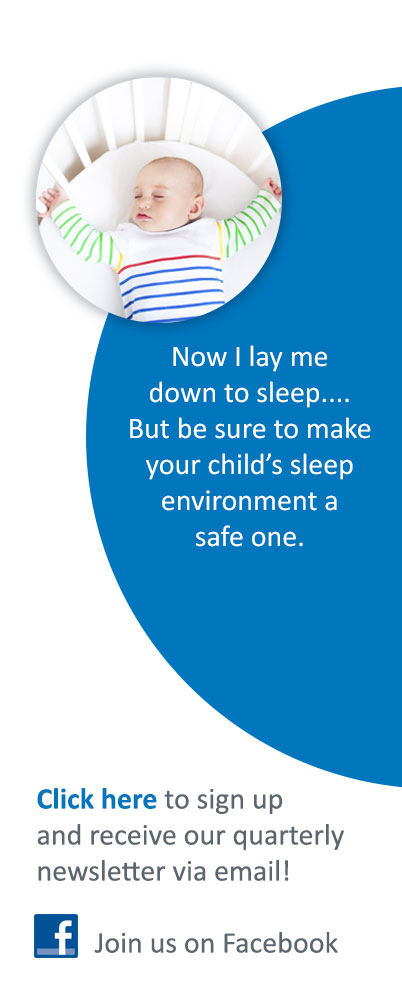
Programs: Home Safety: Safe Sleep
In the early 1990’s, parents were reminded to put their baby “back to sleep” as we learned that the risk of SIDS (Sudden Infant Death Syndrome) would be decreased in this sleeping position. While that messaging still remains important, there are other key factors that can lower your baby’s chance of dying from this cause. We remind parents of the ABC’s of safe sleep:
A – ALONE: A baby should be alone in their crib with no stuffed animals, bumper pads, blankets or other objects. We recommend getting “swaddlers” or "sleep sacks" that can be used to keep baby warm and secure without causing excess fabric around them. These can be purchased in a variety of stores and are also found in the Altru Hospital Gift Shop. This is located in the lobby of Altru Hospital and the hours of operation and more information can be found here.
B – Back: A baby should be placed on their back to go to sleep. Tummy time is important during the daytime when the baby is being watched but at night, a baby belongs on their back.
C – Crib: A baby should sleep only in a crib or playpen designed for babies, not a couch, chair, or adult bed. There is too much cushion on these and the baby is at risk for SIDS. Playpen and crib mattresses are more firm than an adult bed and just what is needed for their sleeping. Sleeping with an adult is also dangerous as it is easy to roll over on the baby or put pressure on their face, causing it to get pushed into the mattress and suffocate.
Please remember: Infants under 1 year of age should not sleep in any included sleeping device such as a swing, infant seat, positioning device or car seats. Positioners (pillows, wedges, etc.) of any type should not be used around the baby.
Car seats are NOT safe places for a baby to sleep when not in the vehicle. When a car seat is level in a base in the vehicle it is tilted back. The baby’s head remains tilted back and their airway remains open. When a child is in a car seat on the floor, their head can tilt forward,cutting off airflow to their lungs. Always transfer a baby from their car seat to a safe sleeping situation when you arrive at your destination.


